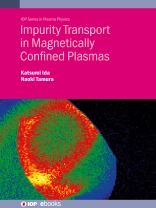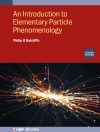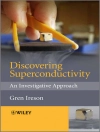Motivated by a renewed interest in impurity transport in nuclear fusion research, this reference text covers the diagnostics, experimental approach, and results of recent impurity transport studies in tokamak and helical plasmas. It also covers the impurity transport parallel to the magnetic field in the scrape-off layer (SOL) and the impact of magnetic topology on impurity transport. Topics covered include an introduction to impurity transport; the diagnostics system with passive and active spectroscopy; impurity transport across magnetic flux surfaces; the effect of magnetic topology; and the control of impurity transport using electron cyclotron resonance heating and ion cyclotron resonance heating. With few books available on impurity transport in plasmas, this book would appeal to academic researchers and graduate students on the field of plasma physics and nuclear fusion research.
Key Features
- Describes recent developments in diagnostics for impurity transport
- Covers recent developments of an experimental approach for impurity transport study
- Provides a comprehensive understanding of impurity transport in different magnetic configurations
- Covers a new area of impurity transport experiment including the effect of magnetic topology
- Written by high-profile authors
Spis treści
1 Introduction
2 Transport model
3 Diagnostics
4 Approaches to the study of impurity transport
5 Impurity transport across magnetic flux surfaces
6 Impurity transport in the edge/scrape-off layer region
7 Effect of magnetic topology on impurity transport
8 Control of impurity accumulation
O autorze
Katsumi Ida received his BSc and MSc from The University of Tokyo in 1980 and 1982. After receiving a Ph D from The University of Tokyo in 1986, he joined the faculty of Nagoya University in 1986 and the National Institute for Fusion Science in 1989. He has pioneered a new frontier in experimental studies of turbulent transport in toroidal plasmas and discovered many essential processes in the turbulent transport of magnetically confined plasmas in far non-equilibrium states. He received the Nishina Memorial Prize in 2011, Chandrasekhar Prize in 2023, and has published over 500 papers, including 100 first-author papers in scientific journals.
Naoki Tamura received his B.E. and M.E. from Nagoya University in 1997 and 1999, respectively. He then moved to the Graduate University for Advanced Studies (SOKENDAI), where he began research on impurity transport in magnetically confined toroidal plasmas, for which he obtained his Ph.D. thesis. In this work, under the guidance of Professor Shigeru Sudo of SOKENDAI, he developed a Tracer-Encapsulated Solid Pellet (TESPEL) with the help of many international collaborators. After starting the research on transient heat transport, he became very interested in the turbulent properties of plasmas.












